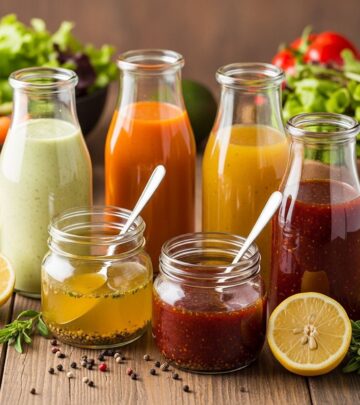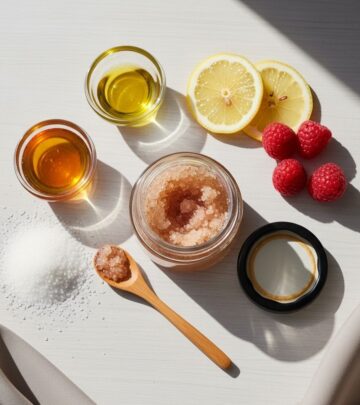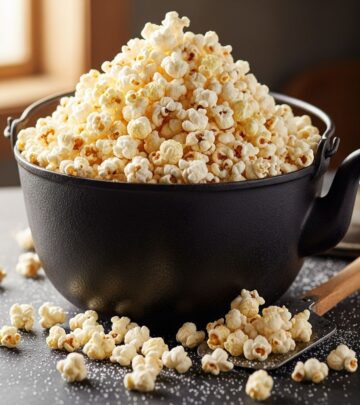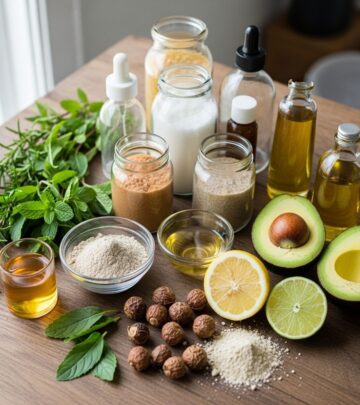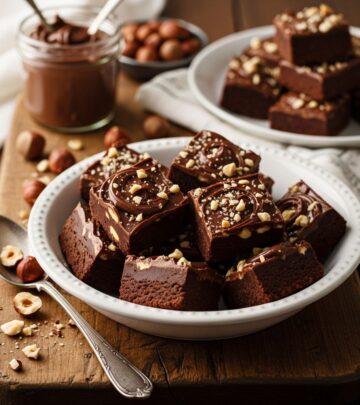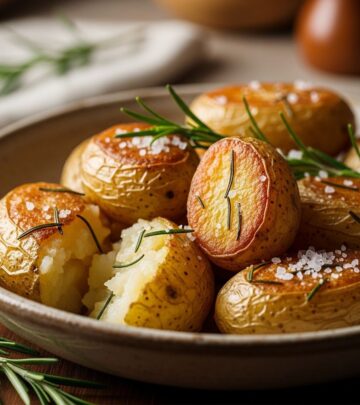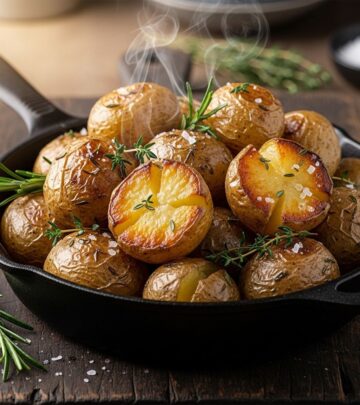Pan Fried Asparagus Recipe: 5 Ingredients For Perfect Flavor
A simple, delicious way to prepare fresh asparagus that will become your go-to vegetable recipe
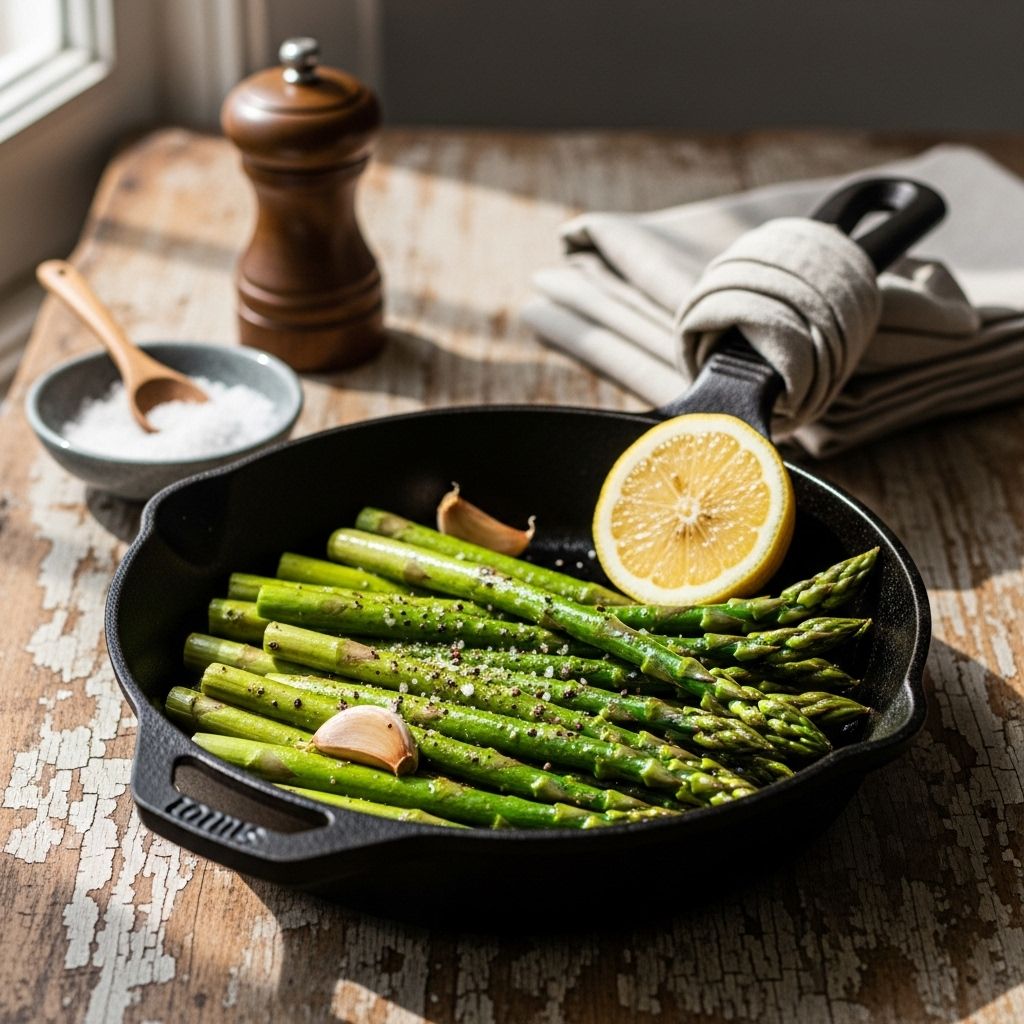
Image: HearthJunction Design Team
Pan-Fried Asparagus: The Perfect Stovetop Side Dish
When it comes to versatile, nutritious, and easy-to-prepare vegetables, asparagus stands out as a perennial favorite among home cooks and professional chefs alike. This vibrant green vegetable not only brings a touch of elegance to your dinner table but also delivers a delightful combination of tender texture and distinctive flavor that pairs beautifully with a wide range of main courses. If you’re looking for a foolproof method to prepare this beloved spring vegetable, this pan-fried asparagus recipe will quickly become a mainstay in your side dish rotation.
There’s something particularly satisfying about the simplicity of stovetop asparagus. Unlike roasting or grilling, pan-frying allows you to monitor the cooking process closely, ensuring that each spear reaches that perfect point of tenderness while still maintaining a pleasant bite. The method we’re sharing today enhances the natural flavors of asparagus with just a few complementary ingredients – butter, olive oil, garlic, salt, and pepper – allowing the vegetable to truly shine as the star of the dish.
Why You’ll Love This Pan-Fried Asparagus Recipe
Before diving into the specifics of preparation, let’s talk about why this particular approach to cooking asparagus deserves a place in your culinary repertoire:
- Quick preparation: From start to finish, this recipe takes less than 15 minutes, making it perfect for busy weeknights or last-minute meal additions.
- Minimal ingredients: You’ll need just five simple ingredients that you likely already have in your pantry.
- Versatile pairing: This asparagus preparation complements virtually any protein – from chicken and steak to seafood and plant-based main courses.
- Consistent results: The stovetop method gives you complete control over the cooking process, ensuring perfectly tender asparagus every time.
- Nutritional benefits: Asparagus is packed with vitamins A, C, E, and K, as well as fiber and antioxidants.
Ingredients for Perfect Pan-Fried Asparagus
One of the beauties of this recipe is its simplicity. You’ll need:
- 1 pound fresh asparagus spears
- 2 tablespoons butter
- 2 tablespoons olive oil
- 1-2 cloves garlic, minced
- Coarse salt, to taste
- Freshly ground black pepper, to taste
How to Select the Best Asparagus
The foundation of any great asparagus dish begins at the grocery store or farmer’s market. When selecting asparagus, look for:
- Firm stalks: The spears should be firm to the touch and stand straight, not limp or bendable.
- Closed tips: The flowery tips should be tightly closed and compact, not spreading or mushy.
- Vibrant color: Look for a bright, vibrant green color with perhaps a slight purple tinge at the tips.
- Uniform size: For even cooking, try to select spears of similar thickness throughout the bunch.
While thickness is often a matter of personal preference, keep in mind that thicker spears tend to have a more robust flavor, while thinner ones cook more quickly. For this pan-fried recipe, medium-thickness spears work particularly well, offering the perfect balance between quick cooking and satisfying texture.
Preparing Your Asparagus
Before cooking, asparagus requires minimal but essential preparation:
- Wash thoroughly: Rinse the asparagus under cold running water to remove any dirt or grit, especially around the tips where soil can hide.
- Trim the ends: The bottom portion of asparagus spears can be woody and tough. There are two methods for trimming:
- The snap method: Hold the asparagus near each end and bend until it snaps naturally. The spear will break exactly where the tender part meets the woody section.
- The cut method: Line up all spears and cut approximately 1-1.5 inches from the bottom ends.
If you're interested in a classic and nutritious way to prepare asparagus that maintains its delicate flavor, try our Simply Steamed Asparagus recipe. It’s a no-fuss option that complements any meal effortlessly. - Pat dry: Use a clean kitchen towel or paper towels to thoroughly dry the spears. This step is crucial as excess moisture can prevent proper searing and may cause splattering when the asparagus hits the hot pan.
How to Cook Asparagus on the Stove
Now that your asparagus is prepped and ready, let’s walk through the simple cooking process:
- Heat a large skillet or sauté pan over medium heat. A 12-inch skillet works well for accommodating a full pound of asparagus without overcrowding.
- Add the butter to the pan and allow it to melt completely, swirling occasionally to coat the surface of the pan.
- Pour in the olive oil and allow the mixture to heat for about 30 seconds. The combination of butter and oil creates a perfect medium for sautéing – the butter provides rich flavor while the oil allows for higher heat cooking without burning.
- Add the minced garlic to the pan and sauté for approximately 30 seconds until fragrant, being careful not to let it brown or burn.
- Carefully place the asparagus spears in the pan in a single layer if possible. If your pan isn’t large enough, you may need to work in batches to ensure even cooking.
- Season generously with coarse salt and freshly ground black pepper.
- Cook the asparagus for 5-7 minutes, turning occasionally with tongs to ensure even cooking on all sides. The exact cooking time will depend on the thickness of your spears and your preferred level of tenderness.
How to Tell When Asparagus is Perfectly Cooked
Achieving the ideal texture for asparagus can be a delicate balance. Here’s how to know when your spears have reached perfection:
- The fork test: Insert the tines of a fork into the thickest part of a spear. It should meet with slight resistance but still penetrate easily.
- The bend test: Pick up a spear with tongs – it should be flexible and bend slightly before returning to its straight position.
- Visual cues: Look for a vibrant green color that’s slightly intensified from its raw state. The spears should appear glossy from the butter and oil.
Remember that asparagus will continue to cook slightly from residual heat after removing it from the pan, so it’s better to err on the side of undercooking rather than overcooking.
Variations and Flavor Enhancements
While this basic recipe produces deliciously flavorful asparagus, there are numerous ways to customize it to your taste preferences or to complement specific main dishes:
- Lemon zest and juice: Add the zest and juice of half a lemon during the last minute of cooking for a bright, citrusy note.
- Parmesan finish: Sprinkle freshly grated Parmesan cheese over the asparagus immediately after cooking.
- Herb infusions: Add fresh herbs such as thyme, tarragon, or chives during cooking or as a garnish.
- Nutty enhancement: Finish with a sprinkle of toasted pine nuts, slivered almonds, or crushed walnuts.
- Balsamic glaze: Drizzle with a high-quality balsamic reduction just before serving.
- Spice it up: Add red pepper flakes for a gentle heat that complements the asparagus’s natural flavor.
What to Serve With Pan-Fried Asparagus
This versatile side dish pairs beautifully with a wide range of main courses. Here are some perfect pairings:
- Seafood: Shrimp scampi, as suggested by the recipe creator, makes for a perfect match. The garlic flavors in both dishes complement each other wonderfully. Salmon, halibut, or any other mild fish also work splendidly.
- Poultry: Serve alongside a perfectly roasted chicken, turkey cutlets, or duck breast for an elegant meal.
- Beef: A garlic butter sirloin steak with this asparagus creates a restaurant-worthy dinner at home.
- Pasta: Lighter pasta dishes, especially those with creamy or light tomato sauces, benefit from the fresh contrast of asparagus.
- Grains: Turn this side into a complete meal by serving it over quinoa, farro, or brown rice with a soft-boiled egg on top.
Storing and Reheating Leftover Asparagus
While this pan-fried asparagus is undoubtedly at its peak when freshly made, leftovers can still be enjoyable with proper storage and reheating:
- Storage: Allow any leftover asparagus to cool completely, then transfer to an airtight container and refrigerate for up to three days.
- Reheating: For the best texture, reheat gently in a skillet over medium-low heat just until warmed through. Alternatively, you can microwave at 50% power in short intervals, though this may slightly affect the texture.
- Cold applications: Leftover asparagus can also be enjoyed cold or at room temperature, chopped and added to salads, grain bowls, or frittatas.
Nutritional Benefits of Asparagus
Beyond its delicious taste, asparagus offers an impressive nutritional profile that makes it a worthwhile addition to any diet:
- Low in calories: With approximately 20 calories per serving, asparagus is a nutrient-dense, low-calorie vegetable.
- Rich in vitamins: It’s an excellent source of vitamins A, C, E, K, and several B vitamins.
- Mineral content: Asparagus provides essential minerals including iron, calcium, and potassium.
- High in fiber: The fiber content supports digestive health and helps maintain satiety.
- Antioxidant properties: Various antioxidants in asparagus help combat oxidative stress and inflammation.
Frequently Asked Questions (FAQs)
Q: Can I use frozen asparagus for this recipe?
A: While fresh asparagus delivers the best texture and flavor for this method, you can use frozen asparagus in a pinch. Thaw completely and pat very dry before cooking. Be aware that frozen asparagus may release more moisture and won’t achieve the same level of caramelization as fresh spears.
Q: How do I know if my asparagus has gone bad?
A: Asparagus past its prime will display several noticeable characteristics: the tips may become mushy or develop a dark, almost slimy appearance; the stalks will feel limp rather than firm; and there may be an unpleasant odor. Fresh asparagus should be bright in color, firm to the touch, and have tightly closed tips.
Q: Can I prepare this dish in advance for a dinner party?
A: For the best quality, asparagus is ideally served shortly after cooking. However, you can trim and prepare the asparagus up to 24 hours in advance, storing it wrapped in a damp paper towel in the refrigerator. Then simply cook it just before serving. If timing is tight, you can cook it up to 30 minutes ahead and keep it at room temperature, though it won’t be quite as perfect as freshly made.
Q: What’s the difference between green, white, and purple asparagus?
A: The different colors of asparagus represent different varieties and growing methods. Green asparagus is the most common and grows above ground with full sun exposure. White asparagus is the same plant but grown underground (mounded with soil to prevent photosynthesis), resulting in a more delicate flavor. Purple asparagus contains higher sugar and anthocyanin levels, giving it its distinctive color and slightly sweeter taste. This recipe works well with any variety, though cooking times may vary slightly.
Q: My asparagus always comes out stringy. What am I doing wrong?
A: Stringiness is usually the result of either not trimming enough of the woody ends or overcooking. Make sure to snap or cut at least 1-1.5 inches from the bottom of each spear, and consider peeling the lower portions of particularly thick spears. Additionally, monitor cooking time carefully – asparagus that cooks too long becomes both stringy and mushy.
With this simple yet effective cooking method in your culinary arsenal, you’ll be able to prepare perfect asparagus any night of the week. The combination of butter, olive oil, and garlic creates a flavorful foundation that allows the natural taste of this remarkable vegetable to shine through. Whether served as part of a weeknight family dinner or showcased at your next dinner party, this pan-fried asparagus is sure to impress with its elegant simplicity and delicious results.
References
- https://www.allrecipes.com/recipe/18318/pan-fried-asparagus/
- https://www.allrecipes.com/recipe/92845/sauteed-garlic-asparagus/
- https://www.allrecipes.com/recipe/220725/pan-fried-asparagus-with-onions/
- https://www.allrecipes.com/recipe/241810/easiest-asparagus-recipe/
- https://www.allrecipes.com/recipe/270844/sauteed-asparagus/
Read full bio of Anjali Sayee

